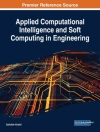This book provides a broad survey of models and efficient
algorithms for Nonnegative Matrix Factorization (NMF). This
includes NMF’s various extensions and modifications,
especially Nonnegative Tensor Factorizations (NTF) and Nonnegative
Tucker Decompositions (NTD). NMF/NTF and their extensions are
increasingly used as tools in signal and image processing, and data
analysis, having garnered interest due to their capability to
provide new insights and relevant information about the complex
latent relationships in experimental data sets. It is suggested
that NMF can provide meaningful components with physical
interpretations; for example, in bioinformatics, NMF and its
extensions have been successfully applied to gene expression,
sequence analysis, the functional characterization of genes,
clustering and text mining. As such, the authors focus on the
algorithms that are most useful in practice, looking at the
fastest, most robust, and suitable for large-scale models.
Key features:
* Acts as a single source reference guide to NMF, collating
information that is widely dispersed in current literature,
including the authors’ own recently developed techniques in
the subject area.
* Uses generalized cost functions such as Bregman, Alpha and Beta
divergences, to present practical implementations of several types
of robust algorithms, in particular Multiplicative, Alternating
Least Squares, Projected Gradient and Quasi Newton algorithms.
* Provides a comparative analysis of the different methods in
order to identify approximation error and complexity.
* Includes pseudo codes and optimized MATLAB source codes for
almost all algorithms presented in the book.
The increasing interest in nonnegative matrix and tensor
factorizations, as well as decompositions and sparse representation
of data, will ensure that this book is essential reading for
engineers, scientists, researchers, industry practitioners and
graduate students across signal and image processing; neuroscience;
data mining and data analysis; computer science; bioinformatics;
speech processing; biomedical engineering; and multimedia.
Об авторе
Andrzej Cichocki, Laboratory for Advanced Brain Signal Processing, Riken Brain Science Institute, Japan
Professor Cichocki is head of the Laboratory for Advanced Brain Signal Processing. He has co-authored more than one hundred technical papers, and is the author of three previous books of which two are published by Wiley. His most recent book is Adaptive Blind Signal and Image Processing with Professor Shun-ichi Amari (Wiley, 2002). He is Editor-in-Chief of International Journal Computational Intelligence and Neuroscience and Associate Editor of IEEE Transactions on Neural Networks.
Shun-ichi Amari, Laboratory for Mathematical Neuroscience, Riken Brain Science Institute, Japan
Professor Amari is head of the Laboratory for Mathematical Neuroscience, as well as vice-president of the Riken Brain Science Institute. He serves on editorial boards for numerous journals including Applied Intelligence, Journal of Mathematical Systems and Control and Annals of Institute of Statistical Mathematics. He is the co-author of three books, and more than three hundred technical papers.
Rafal Zdunek, Institute of Telecommunications, Teleinformatics and Acoustics, Wroclaw University of Technology, Poland
Associate Professor Zdunek is currently a lecturer at the Wroclaw University of Technology, Poland and up until recently was a visiting research scientist at the Riken Brain Science Institute. He is a member of the IEEE: Signal Processing Society, Communications Society and a member of the Society of Polish Electrical Engineers. Dr Zdunek has guest co-edited with Professor Cichocki amongst others, a special issue on Advances in Non-negative Matrix and Tensor Factorization in the journal, Computational Intelligence and Neuroscience (published May 08).
Anh Huy Phan, Laboratory for Advanced Brain Signal Processing, Riken Brain Science Institute, Japan
Anh Huy Phan is a researcher at the Laboratory for Advanced Brian Signal Processing at the Riken Brain Science Institute.












